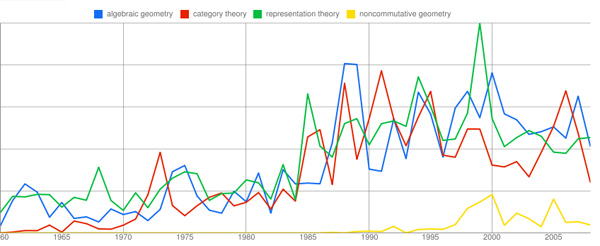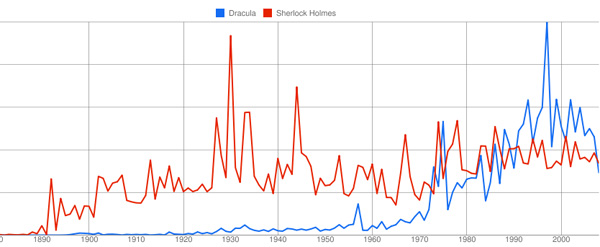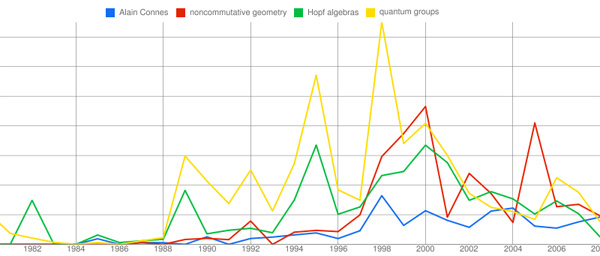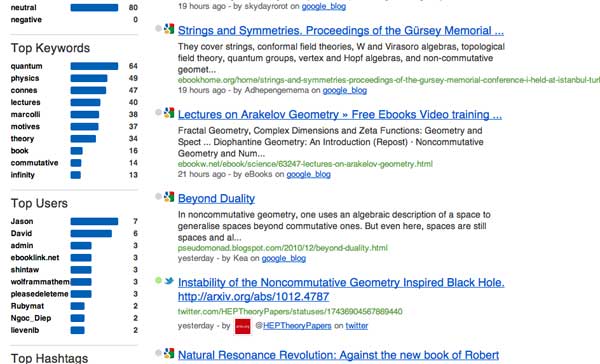
SocialMention gives a rather accurate picture of the web-buzz on a specific topic. For this reason I check it irregularly to know what’s going on in noncommutative geometry, at least web-wise.
Yesterday, I noticed two new kids on the block : Jason and David. Their blogs have (so far ) 44 resp. 27 posts, this month alone. My first reaction was: respect!, until I glanced at their content…
David of E-Infinity
Noncommutative geometry has a deplorable track record when it comes to personality-cults and making extra-ordinary claims, but this site beats everything I’ve seen before. Its main mission is to spread the gospel according to E.N.
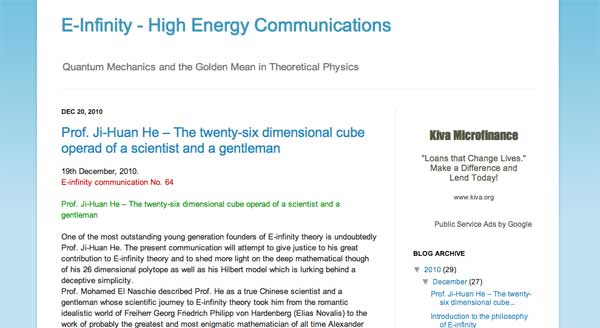
A characteristic quote :
“It was no doubt the intention of those well known internet thugs and parasites to distract us from science and derail us from our road. This was the brief given to them by you know who. Never the less we will attempt to give here what can only amount to a summary of the summary of what E. N. considers to be the philosophical background to his theory.”
Jason of the E.N. watch
The blog’s mission statement is to expose the said prophet E.N. as a charlatan.

The language used brings us back to the good(?!) old string-war days.
“This is amusing because E. N.’s sockpuppets go on and on about E. N. being a genius polymath with an expert grasp of science, art, history, philosophy and politics. E. N. Watch readers of course know that his knowledge in all areas comes primarily from mass-market popularizations.”
As long as the Connes support-blog and the Rosenberg support-blog remain silent and the Jasons and Davids of this world run the online ncg-show, it is probably better to drop the topic here.
Comments closed